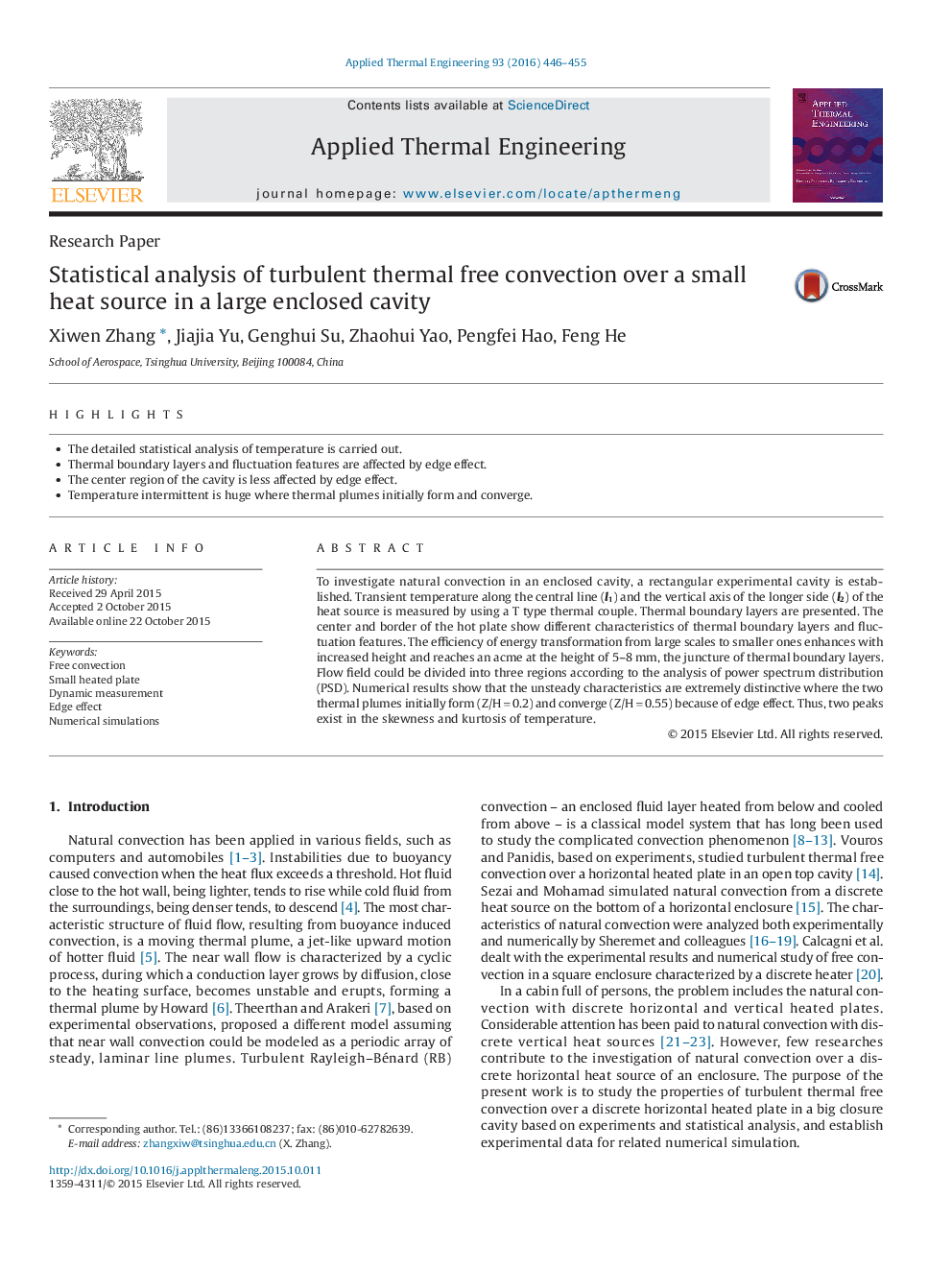| Article ID | Journal | Published Year | Pages | File Type |
|---|---|---|---|---|
| 7048752 | Applied Thermal Engineering | 2016 | 10 Pages |
Abstract
To investigate natural convection in an enclosed cavity, a rectangular experimental cavity is established. Transient temperature along the central line (l1) and the vertical axis of the longer side (l2) of the heat source is measured by using a T type thermal couple. Thermal boundary layers are presented. The center and border of the hot plate show different characteristics of thermal boundary layers and fluctuation features. The efficiency of energy transformation from large scales to smaller ones enhances with increased height and reaches an acme at the height of 5-8âmm, the juncture of thermal boundary layers. Flow field could be divided into three regions according to the analysis of power spectrum distribution (PSD). Numerical results show that the unsteady characteristics are extremely distinctive where the two thermal plumes initially form (Z/Hâ=â0.2) and converge (Z/Hâ=â0.55) because of edge effect. Thus, two peaks exist in the skewness and kurtosis of temperature.
Related Topics
Physical Sciences and Engineering
Chemical Engineering
Fluid Flow and Transfer Processes
Authors
Xiwen Zhang, Jiajia Yu, Genghui Su, Zhaohui Yao, Pengfei Hao, Feng He,
